Have you ever wondered how air hockey works? It’s a mesmerizing game that combines skill, speed, and a touch of magic.
With a smooth playing surface and constant airflow, the puck glides effortlessly, defying gravity and skimming across the table. But how does this seemingly impossible feat come to life?
In this article, we’ll unravel the secrets behind air hockey, revealing the science and mechanics that allow players to engage in endless hours of competitive fun.
Get ready to discover the inner workings of air hockey and gain a new appreciation for this exhilarating game.
Review contents
History of Air Hockey
Air hockey, a fast-paced and thrilling game, has a rich history that dates back to the late 1960s. It was invented by a team of engineers at Brunswick Billiards, a renowned American game table manufacturer.
The idea was to create a game that combined the excitement of ice hockey with the comfort of an indoor setting. This led to air hockey, which relies on a frictionless playing surface and a cushion of air to propel the puck.
Invention of Air Hockey
The invention of air hockey can be attributed to three brilliant minds – Bob Lemieux, Phil Crossman, and Brad Baldwin – working at Brunswick Billiards.
They aimed to design a game that people of all ages and skill levels could enjoy. After months of brainstorming and experimentation, they developed the concept of air hockey.
Popularity of Air Hockey
Since its introduction, air hockey has quickly gained popularity among casual players and serious enthusiasts. Its fast-paced nature and easy-to-learn rules make it an appealing game for people of all backgrounds. Air hockey tables started appearing in arcades, amusement parks, and recreational centers, attracting a broad audience. The game’s popularity also led to the establishment of air hockey associations and the organization of professional tournaments.
The Game of Air Hockey
The objective of Air Hockey
The objective of air hockey is simple yet exhilarating – to score points by hitting the puck into the opponent’s goal using a handheld mallet, known as a striker. Two players typically play the game, each on opposite ends of the air hockey table. The first player to reach a predetermined number of points wins the game, usually five or seven.
Equipment Needed for Air Hockey
You’ll need a few essential pieces of equipment to play air hockey. Firstly, you’ll need an air hockey table with a smooth and frictionless playing surface. Additionally, you’ll need two puck-shaped disks, often called pucks, and two mallets. The mallets strike the puck and keep it in motion throughout the game.
Air Hockey Table
The air hockey table is the game’s centerpiece, providing the perfect playing surface for the puck to glide effortlessly. It consists of a smooth plastic surface, usually surrounded by a raised rail and covered with air holes. These air holes distribute the airflow evenly, creating a cushion of air that reduces friction and allows the puck to move swiftly.
Pucks and Mallets
The pucks used in air hockey are small, round, and plastic. They are designed to be lightweight, allowing for easy maneuverability on the slick surface of the table. On the other hand, the mallets are handheld devices with a flat surface on one end. They are used to strike the puck, and their design ensures a good grip and control during gameplay.
Physics Behind Air Hockey
Friction and Air Cushion
The distinctive feature of air hockey lies in the clever manipulation of physics. By creating a frictionless playing surface and generating a cushion of air, the game designers have minimized the effects of friction on the puck’s movement. This reduced friction allows the puck to glide smoothly and rapidly across the table. The air cushion also slightly lifts, making the puck hover just above the surface and minimizing contact with the table.
Dynamics of Pucks and Mallets
The dynamics involved in air hockey are fascinating. When a mallet strikes the puck, it gains momentum and moves in the desired direction. This movement is determined by the angle, speed, and force applied to the puck. The player must carefully analyze the position of the puck and the opponent’s mallet to strike it and aim for the goal strategically. Combining quick reflexes, hand-eye coordination, and understanding of physics contributes to the thrilling gameplay.
Muscles and Reflexes
Hand-Eye Coordination
Air hockey requires excellent hand-eye coordination. Players must quickly track the puck’s movement, anticipate its trajectory, and flawlessly time their strikes. This coordination between visual perception and motor skills is essential for successful gameplay. Regular practice improves hand-eye coordination, enabling players to react swiftly and accurately during intense air hockey matches.
Muscles Used in Air Hockey
Playing air hockey engages various muscle groups in the body. The primary muscles involved are those of the upper body, such as the forearms, biceps, and shoulders. These muscles are actively involved in striking the puck with precision and power. Additionally, the muscles of the core and legs play a supportive role, providing stability and balance as players move around the table.
Improving Reflexes
Air hockey is a game that demands lightning-fast reflexes. Players must react swiftly to the movements of the puck and their opponent’s strikes. Regular practice helps improve reflexes by training the brain and muscles to respond quickly. Additionally, specific exercises and drills to enhance reaction time can be incorporated into training routines to develop reflexes further.
Benefits of Playing Air Hockey
Physical Fitness
Engaging in regular air hockey matches provides numerous physical fitness benefits. The game involves quick movements, rapid direction changes, and bursts of energy, resulting in increased cardiovascular endurance. The constant strikes and shuffling around the table also improve muscle tone, strength, and agility. Playing air hockey regularly can be an enjoyable way to keep fit and burn calories.
Mental Sharpness
Air hockey is not only physically demanding but also mentally stimulating. The game’s fast-paced nature requires players to make split-second decisions, analyze the opponent’s movements, and strategize accordingly. This mental agility improves concentration, decision-making skills, and the ability to think critically under pressure. The game challenges the brain, keeping the mind sharp and agile.
Social Interaction
Air hockey is an excellent game for fostering social interaction and building relationships. Whether played casually with friends and family or in competitive settings, air hockey provides an opportunity for bonding, friendly competition, and teamwork. It brings people together, encouraging laughter, conversation, and shared experiences. Engaging in air hockey can strengthen existing relationships and facilitate new connections.
Air Hockey Skills and Techniques
Grip and Stance
A proper grip and stance are crucial for effective control and strikes in air hockey. The grip should be firm yet flexible, allowing for precise movements. The stance should provide a solid base, with the feet positioned shoulder-width apart for stability. Proper grip and stance enable better mallet control and enhance accuracy during gameplay.
Shooting Techniques
Various techniques can be used to shoot the puck in air hockey. The most common is the forehand shot, where the mallet is swung forward to strike the puck. Another technique is the backhand shot, which involves swinging the mallet backward and striking the puck with the backside of the mallet head. Different shooting techniques can be practiced to develop versatility and surprise opponents.
Defensive Strategies
Defense is an essential aspect of air hockey. Players must develop defensive strategies to protect their goal and prevent opponents from scoring. These strategies involve carefully positioning the mallet to block the opponents’ strikes, anticipating their moves, and capitalizing on their weaknesses. Effective defense requires quick reactions and reading the opponent’s intentions.
Advanced Techniques
Once players have mastered the basics, they can delve into advanced techniques to elevate their gameplay. These techniques include bank shots, where the puck is struck off the side rails to change its trajectory, and air dribbles, where the puck is lifted and controlled mid-air. Mastering these advanced techniques requires practice, precision, and an in-depth understanding of the game’s dynamics.
Training and Practice
Importance of Practice
Practice is crucial for becoming a skilled air hockey player. Regular training sessions allow players to refine their techniques, improve their reflexes, and develop a deeper understanding of the game.
Consistent practice helps players familiarize themselves with the game’s dynamics and build muscle memory, enabling them to execute shots and strategies effortlessly during competitive matches.
Solo Training Exercises
Solo training exercises can be employed to improve specific aspects of air hockey. These exercises include practicing puck control, where players focus on maneuvering the puck with precision and speed, and power shots, where players work on striking the puck with maximum force. Solo training exercises in regular practice sessions enhance individual skills and prepare players for competitive play.
Playing with Others
Playing with others is an essential aspect of air hockey training. Engaging in matches with opponents of varying skill levels challenges players to adapt and develop versatile strategies.
Friendly competitions with friends or participating in local air hockey leagues allow players to measure their progress, learn from experienced players, and gain exposure to different playing styles.
Competitive Air Hockey
Tournaments and Championships
Air hockey has evolved into a competitive sport, with numerous worldwide tournaments and championships. These events attract skilled players from around the globe, showcasing their talent and passion for the game.
Tournaments are organized in various formats, including singles, doubles, and team competitions, offering different levels of intensity and skill requirements.
Professional Air Hockey Players
As air hockey gained popularity, numerous skilled players emerged, taking the game to new heights. The sport has a community of professional players who excel in tournaments and are dedicated to mastering the game.
These professional air hockey players display extraordinary skills, lightning-fast reflexes, and a deep understanding of the game’s nuances. They serve as inspirations for aspiring players and ambassadors for the sport.
Maintaining an Air Hockey Table
Cleaning and Maintenance
Proper cleaning and maintenance of an air hockey table are essential to ensure optimal performance and longevity.
Regularly cleaning the playing surface, rails, and air holes removes dust and debris that can affect the puck’s movement. Additionally, lubricating the fan and inspecting the electrical components ensures a consistent airflow and prevents malfunctions.
Replacing Parts
With regular use, certain parts of an air hockey table may need to be replaced over time. Common parts that may require replacement include the fan motor, goal sensors, and playing surface.
Regularly inspecting the table’s components and promptly addressing any issues ensures smooth and uninterrupted gameplay.
Table Surface Care
The playing surface of an air hockey table is susceptible to wear and tear. To maintain the table’s performance, it is essential to regularly clean the surface and check for any scratches or dents that may affect the puck’s movement. Applying a suitable wax or polish helps reduce friction and prolong the life of the playing surface.
Alternative Versions of Air Hockey
Tabletop Air Hockey
Tabletop air hockey offers a portable and compact alternative to traditional air hockey tables.
These smaller versions allow players to enjoy the game in a smaller space, making them ideal for gatherings, dorm rooms, or offices. Tabletop air hockey still incorporates the same principles and rules as the larger version, providing a fun and exciting experience.
Virtual Air Hockey
As technology advances, virtual air hockey has become increasingly popular. Virtual air hockey allows players to experience the thrill of the game through computer simulations or virtual reality platforms.
These virtual versions aim to mimic air hockey’s real-life physics and dynamics, providing an immersive and entertaining gaming experience.
Other Variations
In addition to traditional air hockey, several game variations have emerged. These variations include glow-in-the-dark air hockey, where the playing surface and components are illuminated, and multi-player air hockey, which allows more than two players to compete simultaneously. These alternative versions add a unique twist to the game, enhancing the excitement and variety of gameplay.
As you can see, air hockey is not just a game; it’s a mesmerizing blend of skill, strategy, and physics. From its humble beginnings to the competitive sport it is today, air hockey has carved a special place in the hearts of enthusiasts worldwide.
So grab a mallet, step up to the table, and immerse yourself in the thrilling world of air hockey!


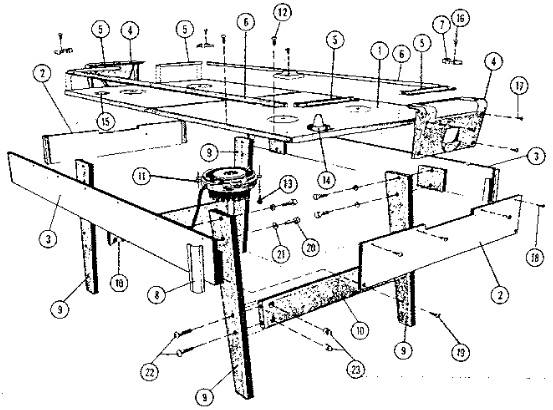
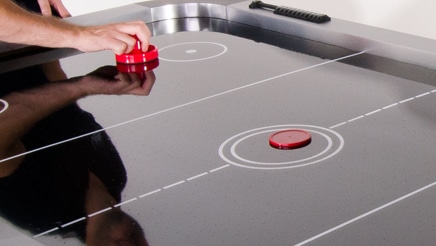
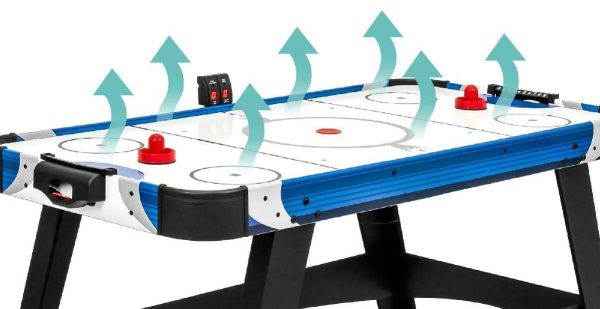


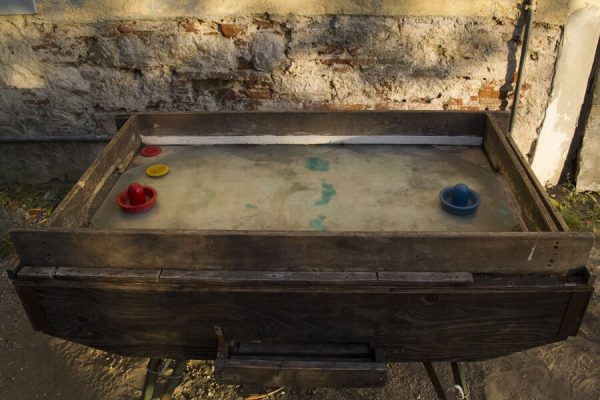
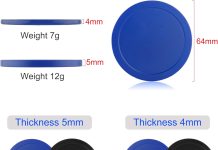
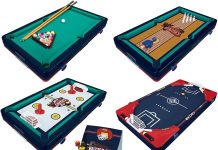
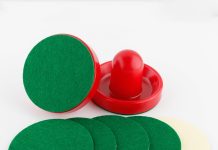
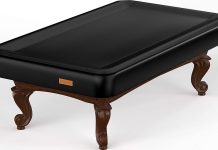
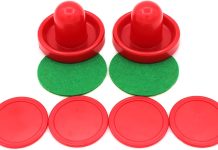
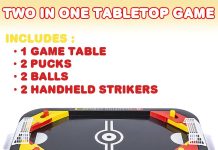














![Best Outdoor Dartboards [Reviews and Buying Guide 2024] Best Outdoor Dartboards](https://gamersets.com/wp-content/uploads/2022/12/Best-Outdoor-Dartboards-100x70.jpg)

![Best Mini Air Hockey Table [Reviews & Buying Guide 2024] Best mini air hockey table](https://gamersets.com/wp-content/uploads/2022/10/Best-mini-air-hockey-table-100x70.jpg)







